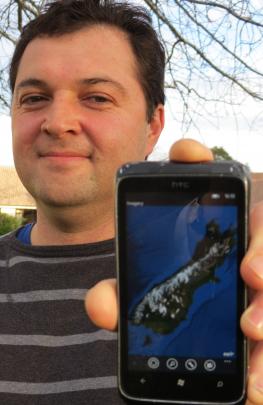AgResearch's Information Solutions manager, Greg Peyroux, of Invermay, believes that in the future many farms will be managed by someone in an office on Lambton Quay.
They will be able to receive data on their smartphones and laptops and give instructions to farm-based sensors, robotic herding and sensing vehicles, virtual fences and balloons with cameras.
And that future is getting pretty close.
While that meant fewer workers would be required on-farm, the additional manufacturing of new high-tech computer programs, smartphone networks, apps, sensors, robotics and the accompanying componentry, under development in New Zealand, may provide more employment, add to our export balance sheet and strengthen the knowledge economy.
''However, the biggest issues are battery life of phones, laptops and other appliances and network connectivity,'' Mr Peyroux said.
He said the AgResearch Lincoln Engineering team was working on the development of a longer life battery.
Mr Peyroux was a speaker at the recent Mobiletech Summit in Wellington and presented a paper on technology for farm management that was under development or already in place.
''The summit was amazing,'' Mr Peyroux said.
About 50% of farmers used smartphones and the rate of adoption was growing, he said.
They were used for things such as data gathering and image recording, warnings if there was an equipment fault, and information supply.
In his presentation, he referred to AgResearch's work in association with Mosgiel-based Tracmap, AbacusBio and the Dunedin City Council, which looked at using GPS systems for proof-of-placement work (particularly for fertiliser).
AgResearch had developed a generic task and data recorder, which could be used for phenotype recording, carcass quality measurements, forage data collection and gas sampling.
He said app sensors had been developed to measure nitrous oxide emissions from pasture, while another system could measure soil damage and then alert the farmer to put the cows in the shed if conditions were unsuitable.
He said they were working on an app that aided effluent management, advising the farmer of the right time, place and amount of effluent to be applied in a particular paddock.
Sensors would address sediment run-off mitigation and help farmers make decisions about fencing and stock rotation.
Another app looked at virtual reality planning for changing land use.
''The landowner can point his smartphone at a particular block and it will indicate what it would look like and what would the impact be if existing pasture or scrub was converted into forestry or another land use.''
Mr Peyroux said the use of balloons on-farm was an interesting prospect.
GoogleLoon - Google's large balloon that flew high in the atmosphere - was launched earlier this year to explore the possibility of using a balloon network to provide internet connectivity in rural areas.
However, an alternative to that was using smaller balloons - Agriloons - that were tethered on-farm and rose about 100m.
In addition to providing connectivity and wi-fi for farmers, they would also have sensors and cameras, providing a 360-degree view of the farm.
''Balloon sensors may sweep the farm and work out soil, elevation and pasture properties.''
The data collected could help make decisions about feed wedges, and make predictions about soil moisture and effluent disposal.
''Then there is virtual fencing, which is pretty cool,'' he said.
Stock wear GPS collars and when they get close to pre-programmed or phone-set virtual boundaries, an alarm or similar is activated, discouraging them from crossing them.
He said the University of Sydney had developed Shrimp, a wheeled, robotic trolley-like vehicle with sensors and docking stations, which was able to herd stock to particular areas.
He said AgResearch's Dr Andrew Manderson, of Grasslands, Palmerston North, had developed a small, low profile, battery-powered Agri-Rover, an autonomous ground vehicle that deployed from a central base station, navigated to a paddock (pre- and post-grazing), collected soil and pasture data at high spatial detail.
''I think tech will play a massive role on farms, making more efficiencies and increasing productivity,'' Mr Peyroux said.
''There is a huge potential and we are on the cusp of integrated and automated farming,'' he said.
- Yvonne O'Hara

